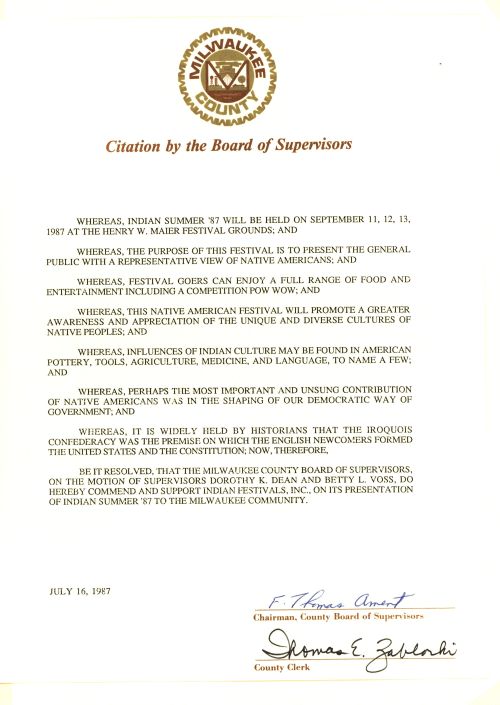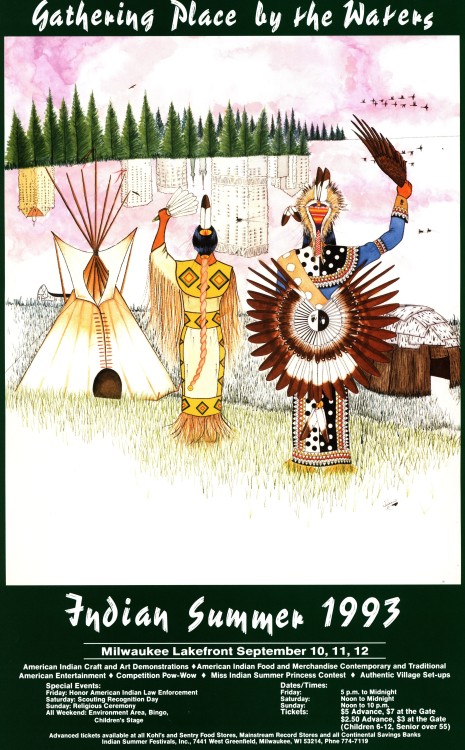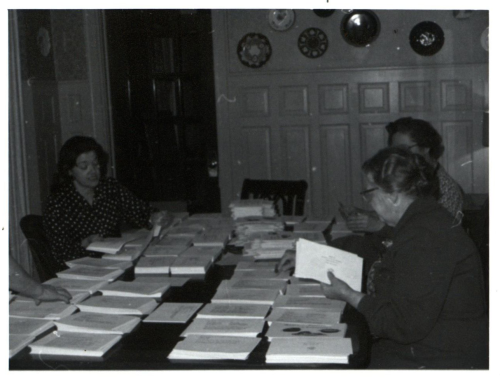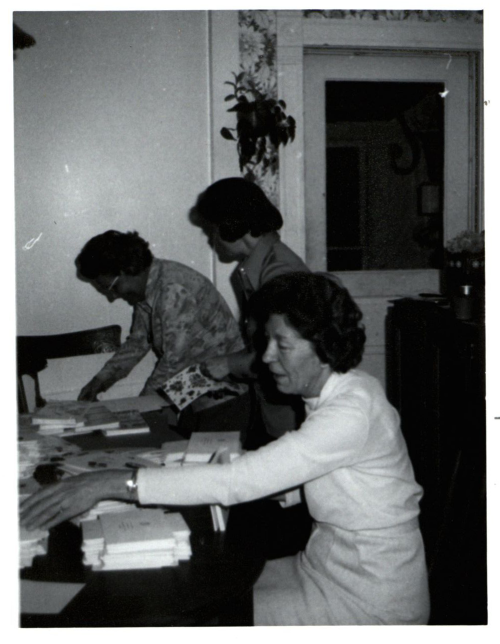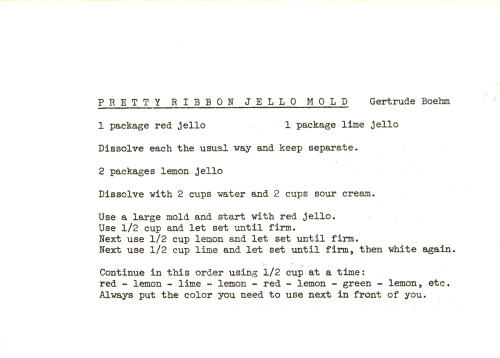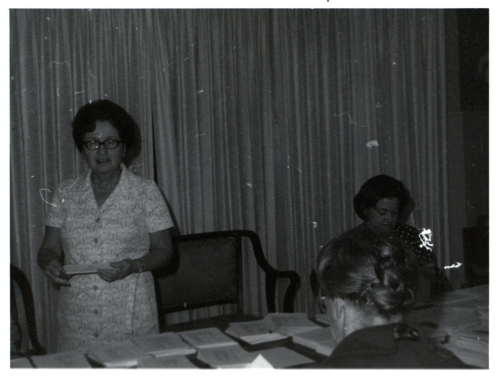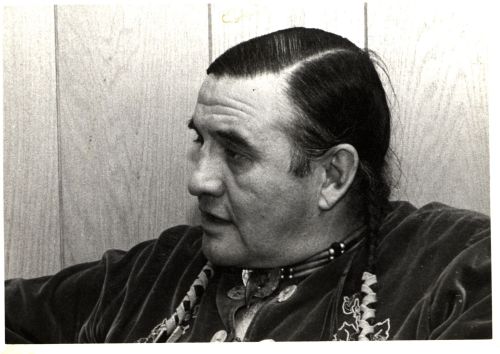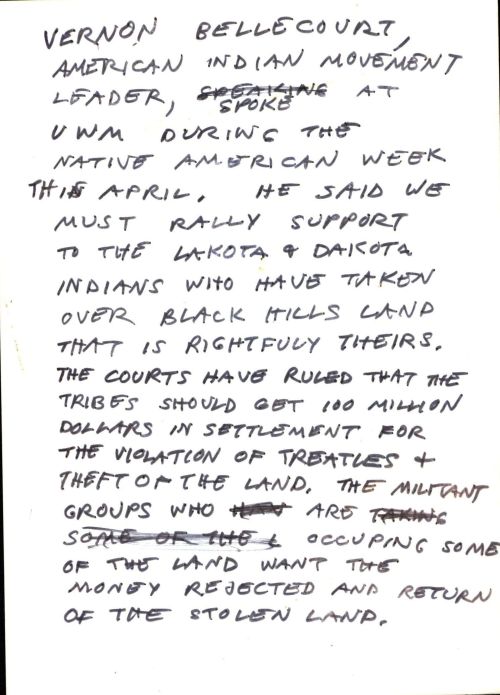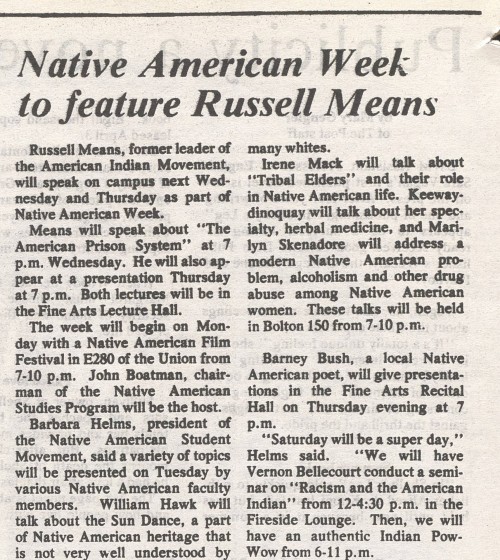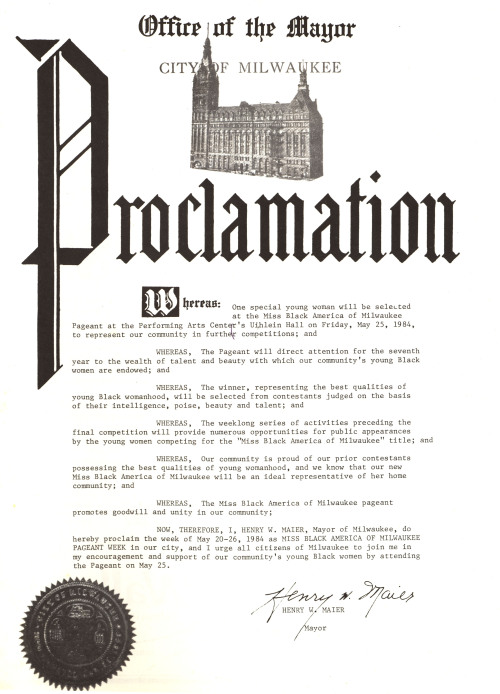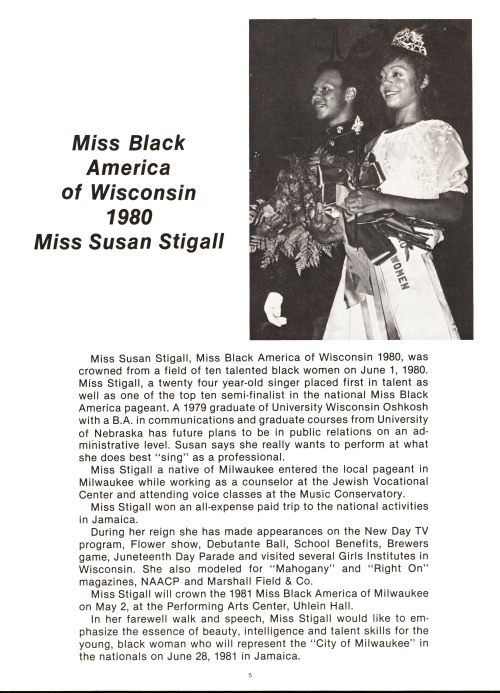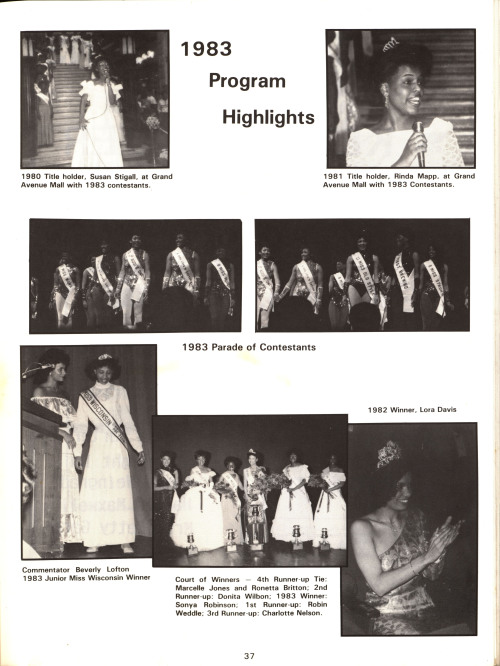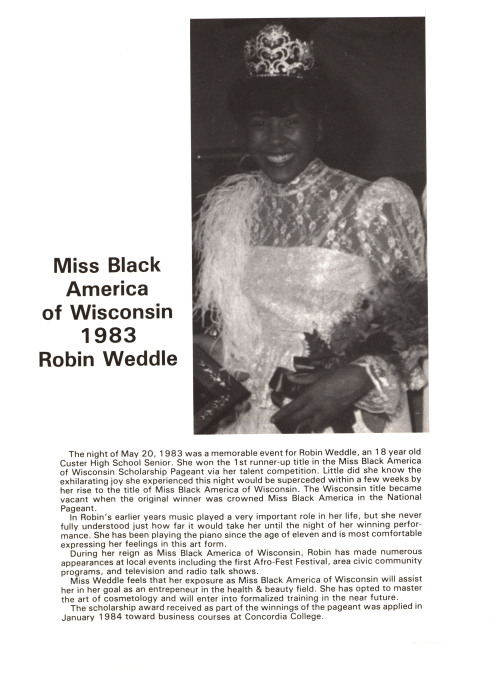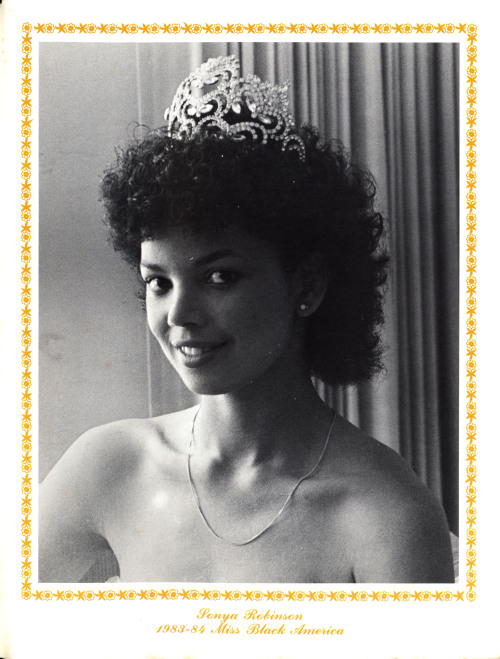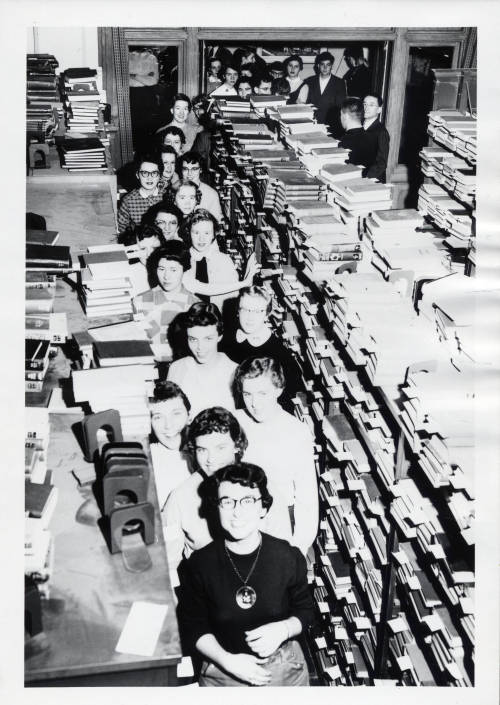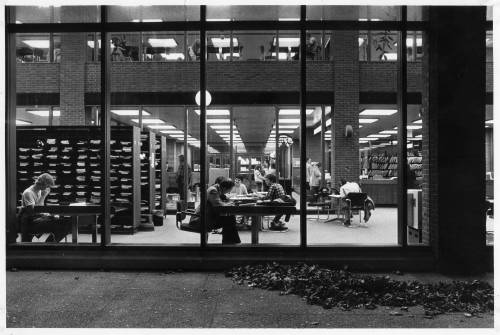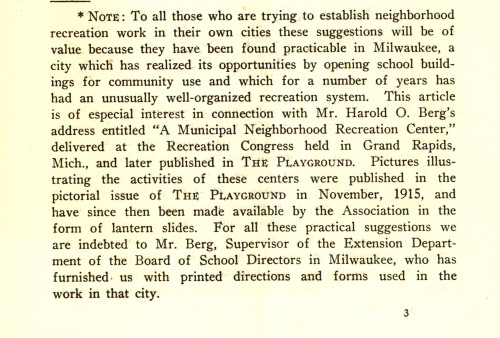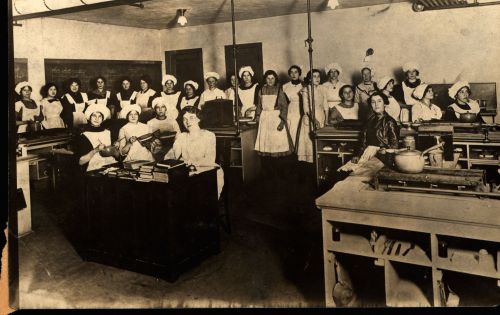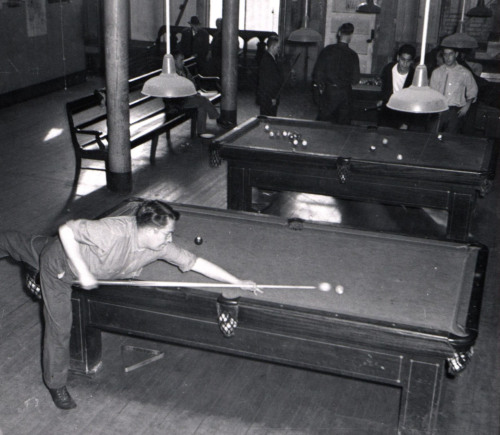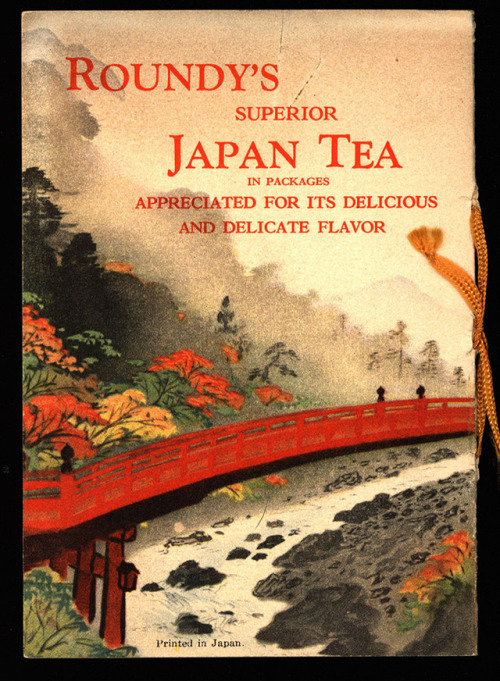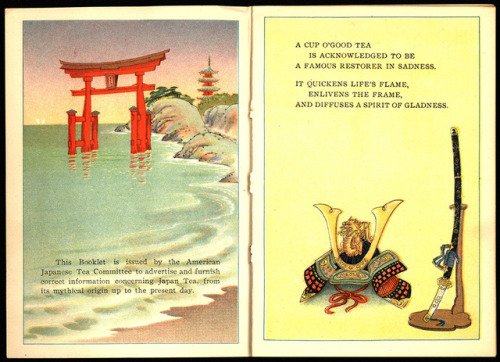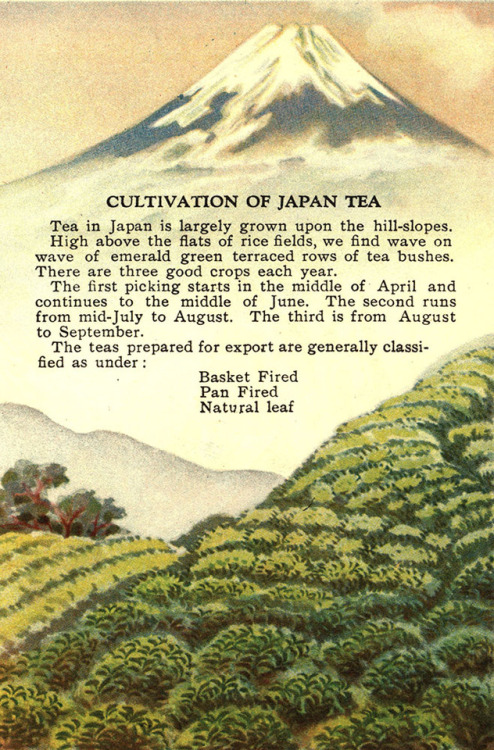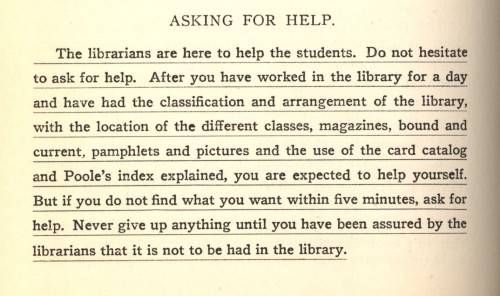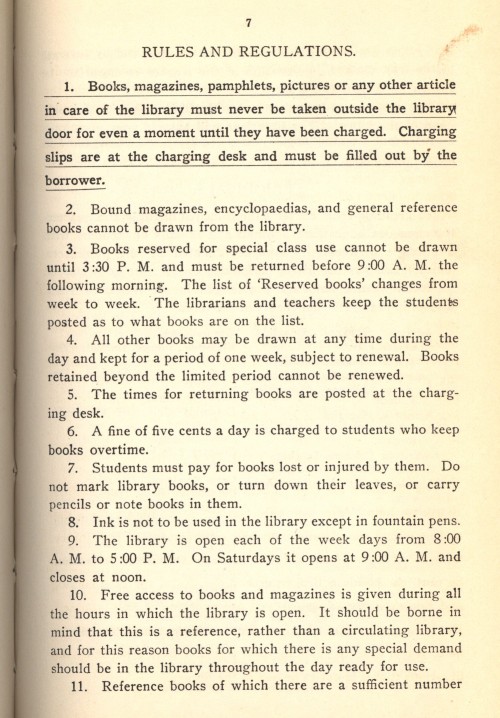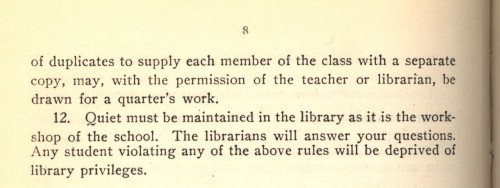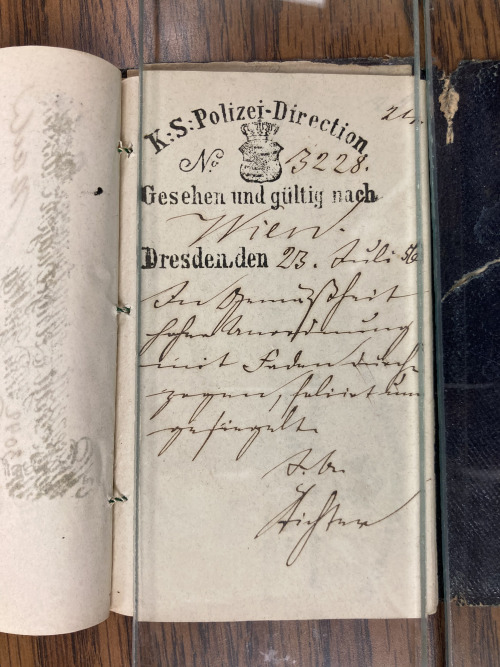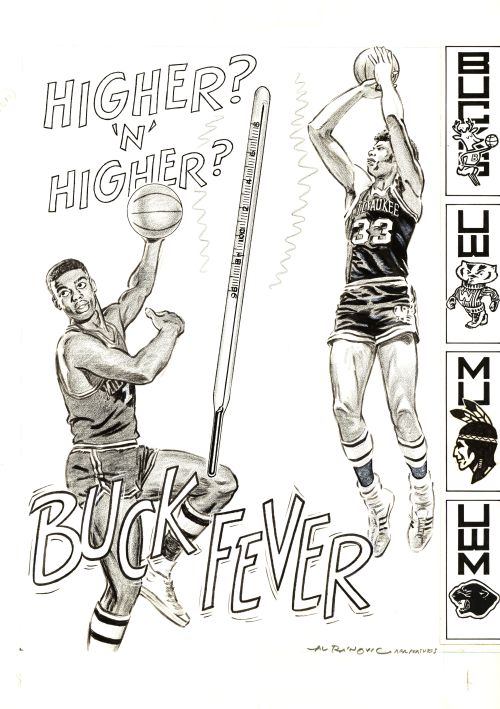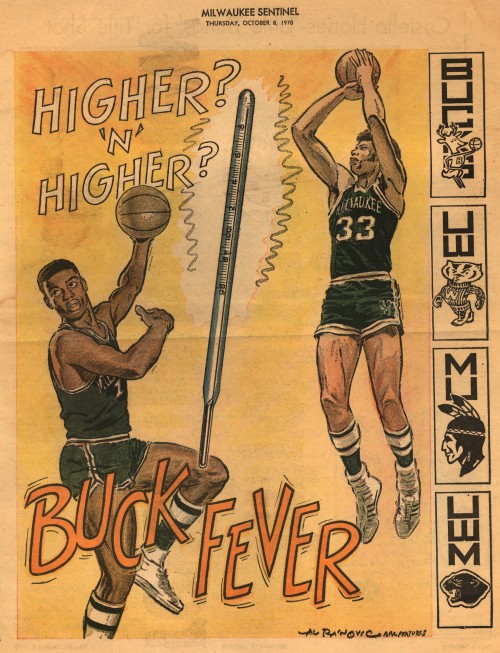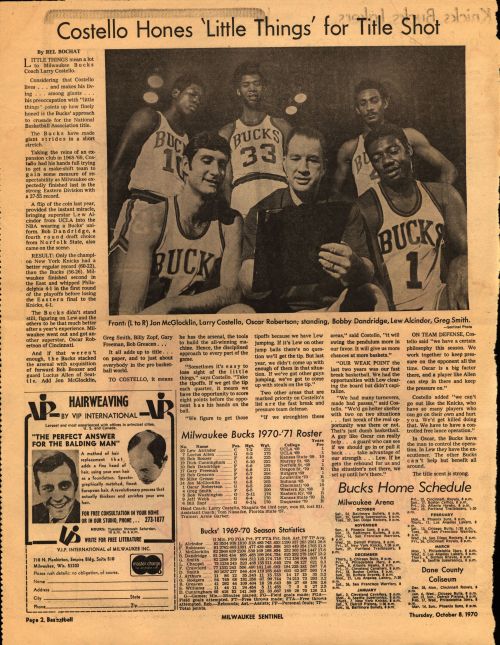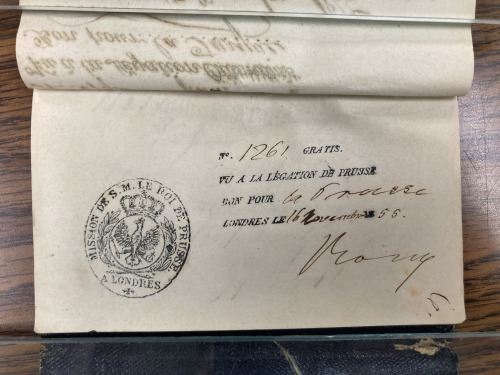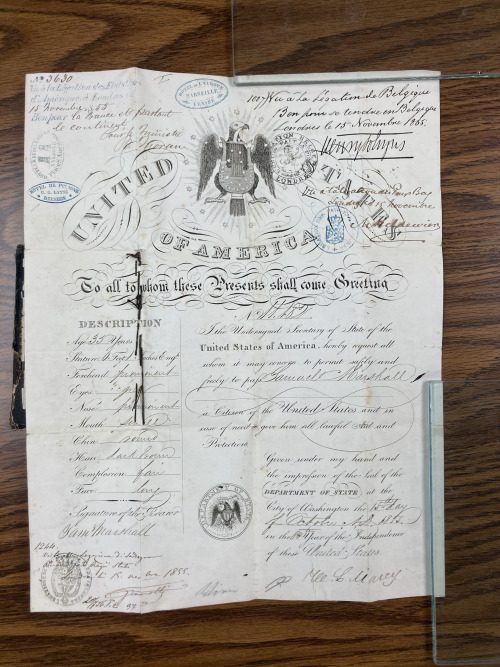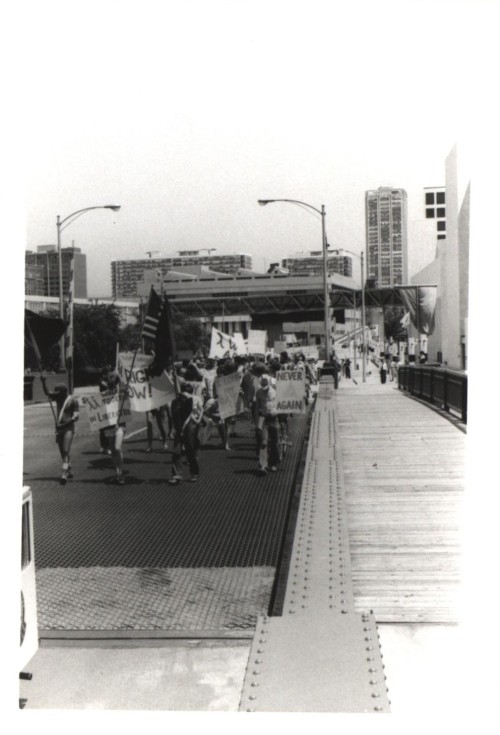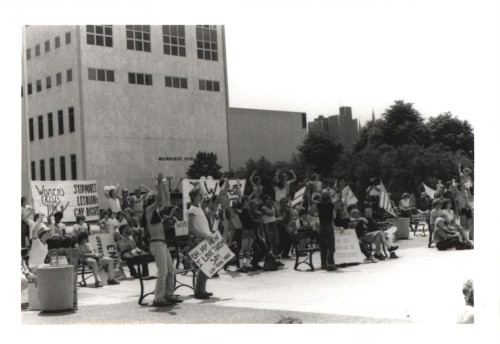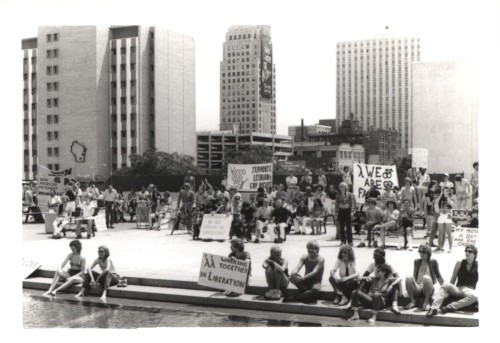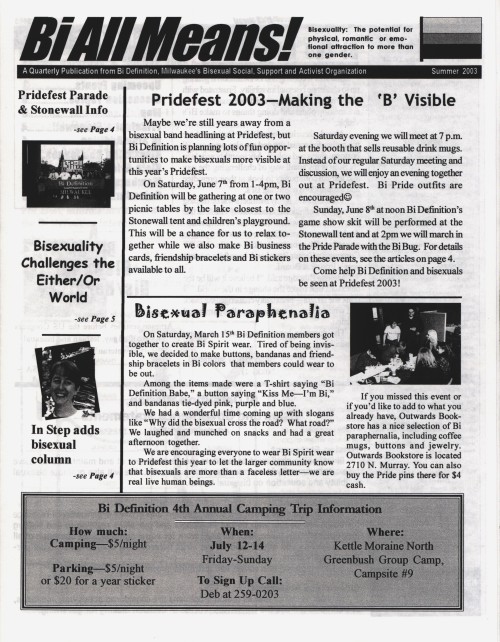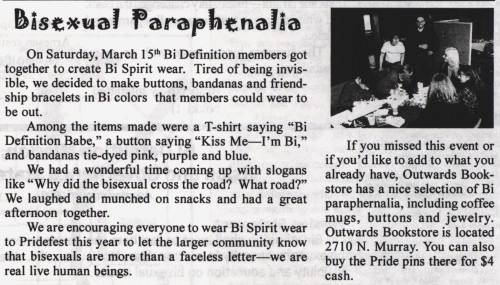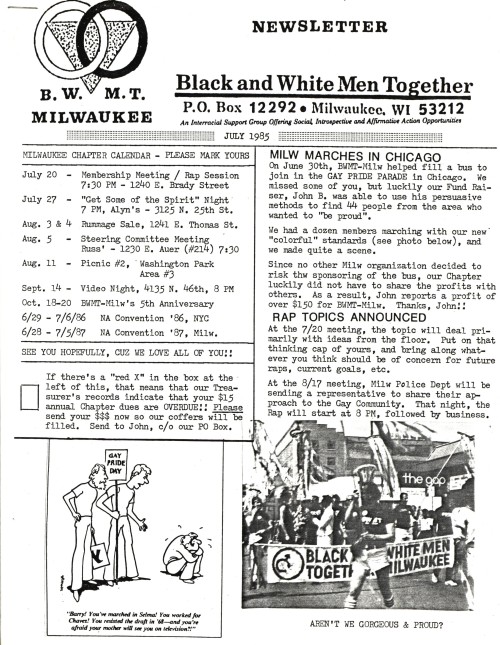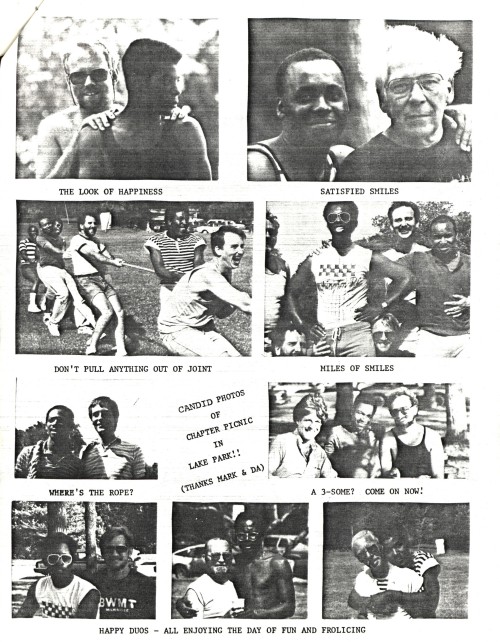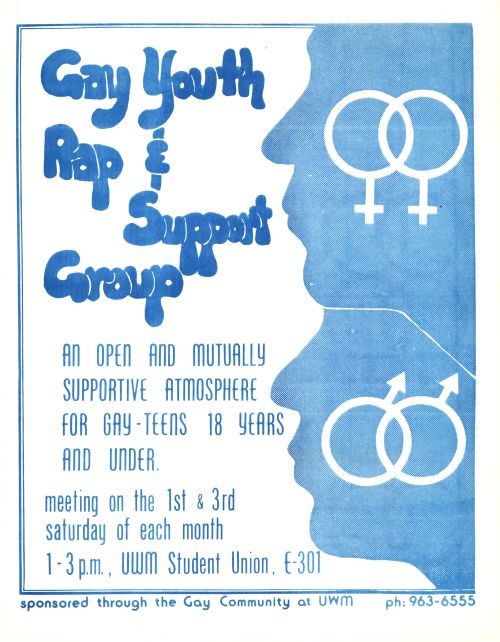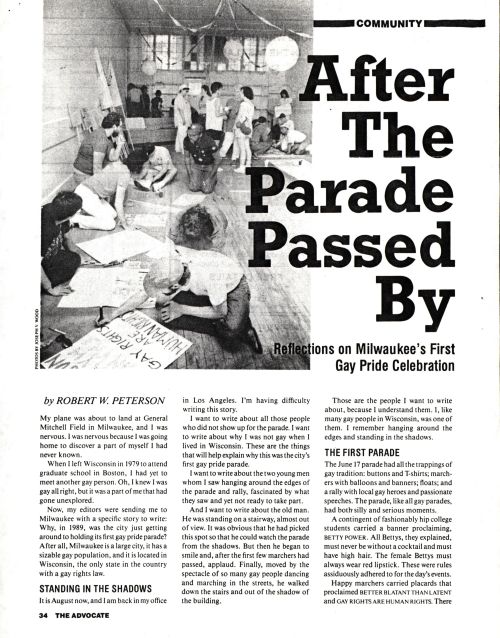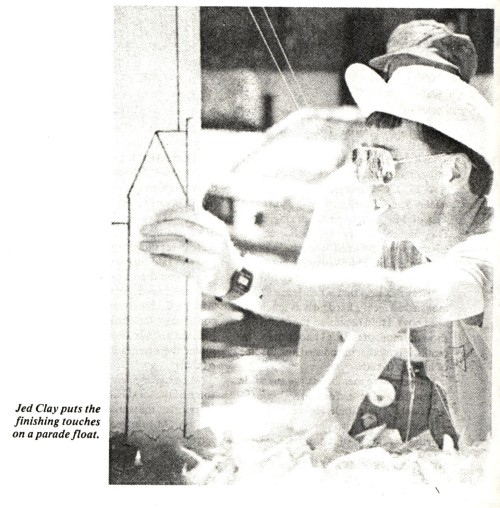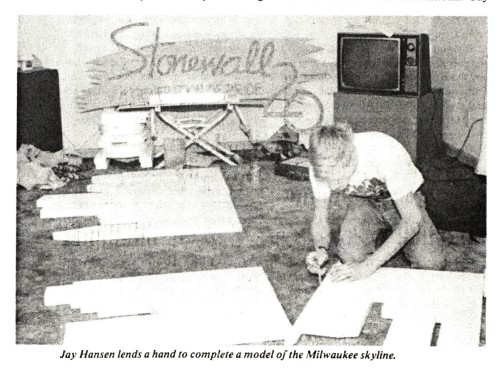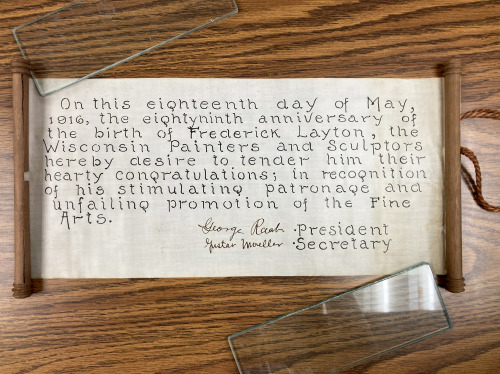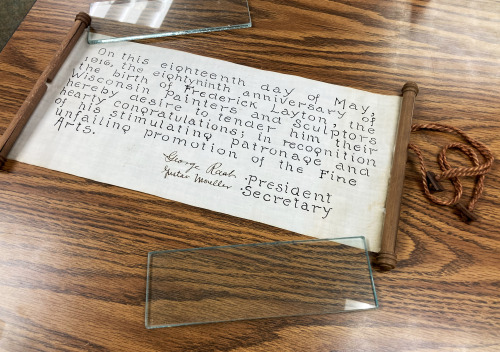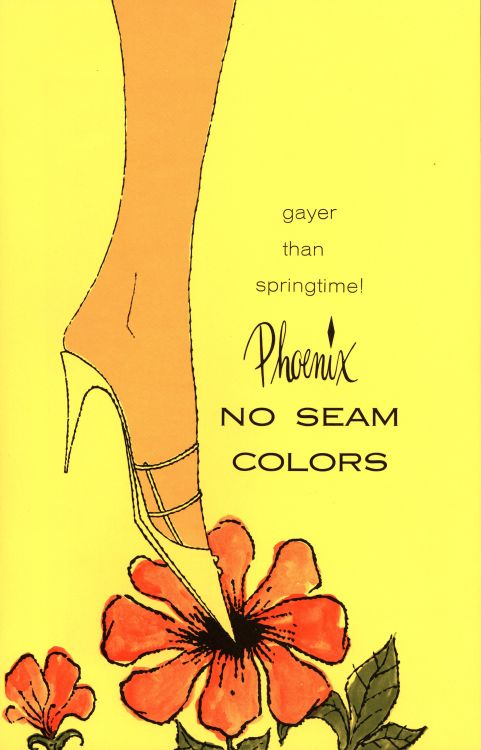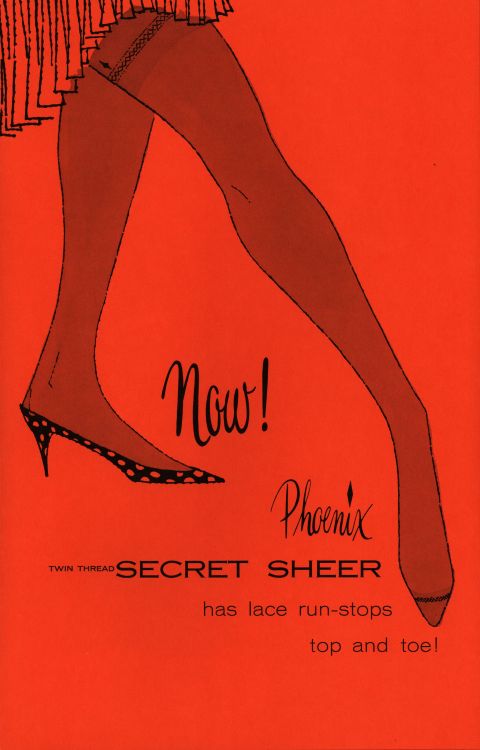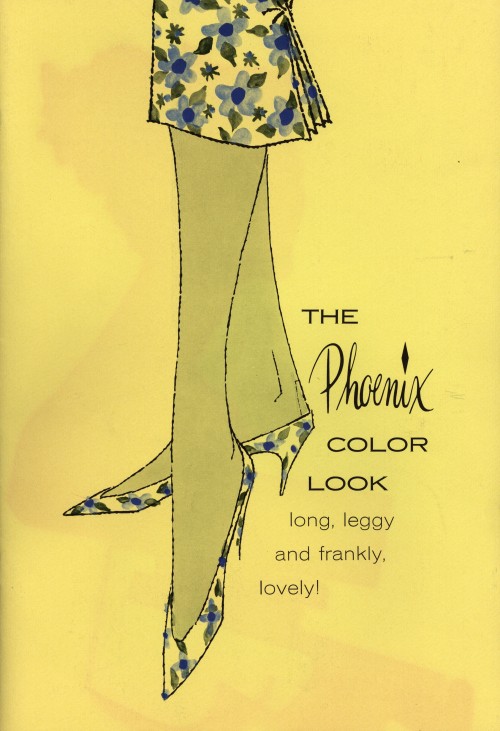#uwm archives
We at the archives took a few minutes to go outside and enjoy the lovely (finally!) spring weather this afternoon and we hope all of our local followers do the same. Here are some images of historical Milwaukeeans doing likewise to inspire you. These images of dapper folks enjoying the city’s beautiful parks come from the Thomas and Jean Ross Bliffert Postcard Collection (Mss 171) and are located online in the Greetings from Milwaukee Digital Collection. Several of the city’s most notable parks, including Washington Park above, were designed by legendary landscape architect Frederick Law Olmsted, who is the subject of an exhibit at our colleagues at the Villa Terrace Decorative Arts Museum: “In the Park with Frederick Law Olmsted: A Vision for Milwaukee.”
Go out today and enjoy some of Mr. Olmsted’s legacy!
Post link



A Pint o’ Poetry for St. Patrick’s Day
As we contemplate the Emerald Isle and what’s in the pot at the end of the rainbow this St. Patrick’s Day, likely nothing much will go better with our glass of Guinness than a pint o’ poetry. (Okay, maybe a dram of so of Jamesons and some lamb stew … but back to that poetry).
Tucked away in a small corner of the archives is the collection, Arena Editorial Office Files, 1960-1965, from Coolgreany, Ireland, which includes the works, correspondence and galley proofs from the abbreviated run of an Irish literary magazine’s four issues. This collection, UWM Mss 002, was the second manuscript collection acquired by the archives after the highly regarded The Little Review collection.
Purchased in 1966 for the burgeoning archive (with literary aspirations), accessioning paperwork includes a note between administrators:
“Any interest in this? ‘Arena’ is not 'The Little Review,’ but then the price is different too."
Indeed, a receipt shows theArena collected works cost $980 in February 1966. In fact, the bookseller’s notes show they set the collection aside for the university in case they wanted it:
"Knowing of your own special enthusiasm in the field of little magazines.”
In that short press run of four issues between 1963 and 1965, Arena published poems and short stories from (mostly) Irish authors including Patrick Kavanaugh, Thomas Kinsella, Mary Lavin and others.
You can’t bring your Guinness into the reading room, but you can get your fill of Irish verse while you’re here. The UWM Archives is open Monday to Friday, 9 a.m. to 4:30 p.m.
Pictured above:
- The entire print run forArena an Irish literary magazine from the early 1960s (Box 1, Folder 2).
- The cover of Arena Issue No. 3 featured a picture of the three editors (Box 1, Folder 10).
- The last page of the last edition of Arena, featuring the issue’s contributor notes and a poem by Patrick Kavanagh (Box 1, Folder 6).
–Brendan Dooley, Archives Graduate Intern
Milwaukee’s Indian Summer Festival (Part 2)
Indian Summer is noted as the “largest Native American gathering of its kind in the country” (https://www.indiansummer.org/). In our prior post, we noted that Milwaukee had its inaugural festival in September 1987. The pictured posters are from subsequent years of the festival and are included in the publicity materials within the collection (UWM Mss 250) along with materials that reference Education Day and the annual Winter Pow Wow at the Wisconsin State Fair Park.
Milwaukee’s Indian Summer Festival is on-going and continues to be an event that is significant in educating and engaging the public with the history and culture of Milwaukee’s indigenous communities. As always, we acknowledge in Milwaukee that we are on traditional Potawatomi, Ho-Chunk and Menominee homeland along the southwest shores of Michigami, North America’s largest system of freshwater lakes, where the Milwaukee, Menominee and Kinnickinnic rivers meet and the people of Wisconsin’s sovereign Anishinaabe, Ho-Chunk, Menominee, Oneida and Mohican nations remain present.
Post link
Cooking with UWM’s Women’s Service Club
In 1968, the UWM Women’s Service Club created a cookbook that consisted of recipes for meat dishes, casseroles, desserts, and other midwestern favorites. Pictured, are members of the club binding copies of the cookbook – one of which we have at UWM Archives (UWM Archival Collection 125). Enjoy these recipes for jello molds, jello salads, and fluff. One (or more) may be an interesting addition to your holiday table.
Post link
Meet intern Maddi Brenner, third-year graduate student in the coordinated master’s degree program for Library and Information Science (MLIS) and Urban Studies (MS). She is in her final year of the program and plans to graduate in May 2022.
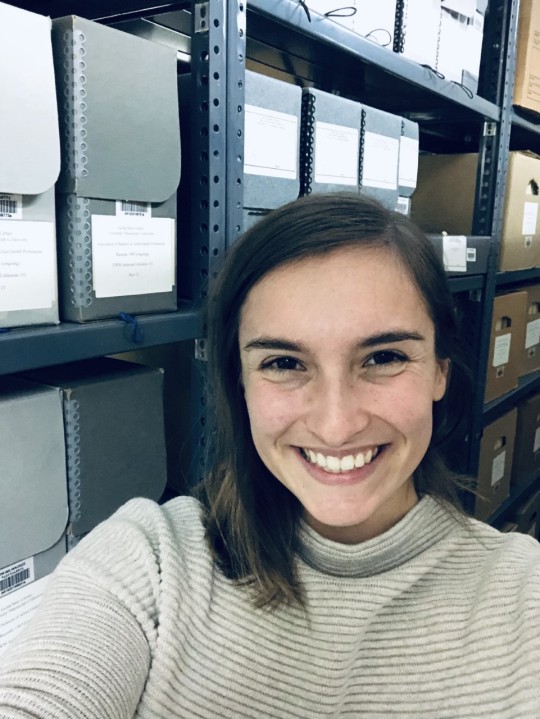
What is your area of study and research interests?
My research interests include urban history, public libraries, mental health & pedagogy, and anything archives.
Tell us about your thesis research and field work.
I am currently in the research phase of my thesis. I am analyzing the expansion of branch libraries and the implementation of a coordinated branch library system in the city of Milwaukee during the 1960s and 70s. I am reviewing the goals of the plan, its development and success post-construction. So far, I have noticed several discrepancies in funding and budget allocations, library location issues, council disagreements and neighborhood dynamics involved in library development.
I am also a fieldworker at Marquette University where I am processing the previously restricted collection of Joseph McCarthy (JRM). If you are interested in any random facts about the 1950s, I seem to have copious amounts of knowledge on the topic. One thing I am working on now is transferring relevant material related to and by Jean Kerr Minetti (the wife, and later widow, to Joe) from the JRM collection to its own open series. The documentation of women involved in the life of famous male figures is not often represented or even in its own narrative. The goal is to connect a sort of interrelatedness to the two series, but ultimately allow the individuals to stand alone in their interpretation.
It reminds me that although work has and is being done to address issues in collection arrangement and description, there is still more to do.
What draws you to the archives, special collections, or libraries profession?
I am really interested in how primary sources connect us to certain understandings of our history, especially through outreach, reference, and research.
What is your favorite collection within the archive – or most interesting record/collection that you’ve come across?
I don’t have a true favorite, but I do think it’s cool that we hold the Society of American Archivists records. It is a massive collection with over 350 boxes and more than 3,500 digital files. Organization of the material has been re-arranged multiple times with new accessions up to 2018. I am not only fascinated by the history of archiving and collection management, but also how these records shaped issues of privilege, representation, and accessibility in the archives today.
What are you working on now for the archives?
Currently, I am working on research regarding reference and WTMJ film footage. The purpose of the project is to explore the frequency of reference requests and the value of preserving WTMJ footage. I will be analyzing both social media and e-mail as platforms crucial in access and outreach processes.
I also regularly coordinate archive transfers to other Wisconsin schools. It is fun to see what type of material is out there from other repositories and how impactful this program can be for researchers. Wisconsin is one of the only states that has this program, so that’s exciting!
What’s something surprising you’ve learned (about yourself as an archivist or about the profession) since you’ve started working at UWM Archives?
Honestly, I’ve learned that no two days are the same at the archives. There is so much going on and almost always a reference inquiry - whether big or small that I can dive into. There is a common misconception that archivists just sit around in an underground storage room all day and though, I surprisingly love being in the storage rooms, that’s far from the truth. We wear many hats.
MeetBrendan Dooley, a graduate student in the department of Library and Information Science.
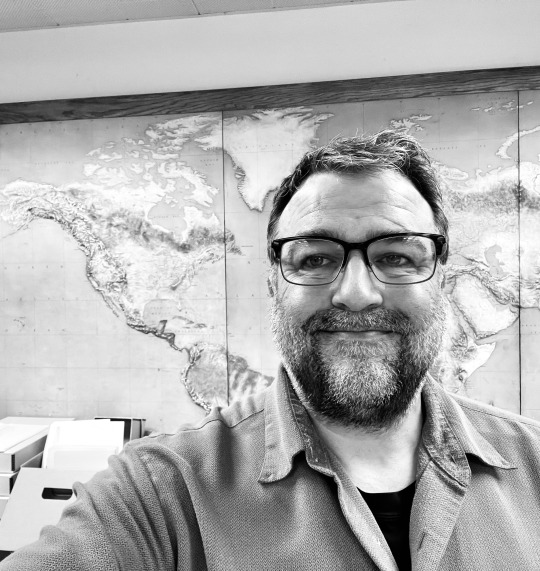
What is your area of study and research interests?
I’ve been intent on the archives concentration since starting my MLIS in Spring 2021, but I could see that changing. This semester I’ve been working as an intern here in the archives as well as a reference intern upstairs in the American Geographical Society Library. I find both places to be incredibly fulfilling places to gain experience and am truly enjoying the reference aspects of each as much as the research sides of what needs to be done. Helping others with their requests is incredibly rewarding.
What year are you on in your program? When do you plan to graduate?
I’m in my third semester of classes right now. I took an archives and library course when I started in spring 2021 semester. I did a three-credit fieldwork class over the summer in the UWM archives where I worked on accessioning the Jim Northrup Papers, which was a fantastic experience (and led in part to my internship in the archives here). If all goes to plan I’ll be able to graduate Winter 2022.
Tell us about your summer fieldwork.
The Northrup accession from my summer fieldwork had me working with the personal and professional writings of Native American author/activist Jim Northrup Jr., an Anishinaabe from the Fond du Lac reservation in Northern Minnesota, not far from the western edge of Lake Superior. He was sent to a federal boarding school at the age of 6, and he was a Vietnam vet, journalist and newspaper editor and columnist, poet, playwright, novelist, writing instructor and more. He began relearning his native Ojibwe language as an adult and started an annual camp to help teach it to others. He and his wife, Pat, made traditional birchbark ricing baskets for chaffing wild rice they harvested from nearby lakes and taught that as well at the camp and internationally at events and readings they were invited to do.
What draws you to the archives, special collections, or libraries profession?
A sincere love for discovering information and growing knowledge, for myself and those around me. I’ve been a writer, journalist and editor for 20 years. Circumstances (due to Covid-19) found me out of a regular full-time gig in summer 2020. I used the opportunity, and the Wisconsin GI Bill, to turn that situation into a positive and return to school for my MLIS, something I had been considering for a year or so — though as a part-time nights/weekends student on a longer path to graduation. My love of journalism, similarly, was wanting to uncover stories and share them with the public — that’s all in the same vein as archival work as far as I can see.
What is your favorite collection within the archive, or most interesting record/collection that you’ve come across?
My favorite collection to come across in the archive, aside from the Northrup collection I’ve been accessioning, is the Charlotte Russell Partridge and Miriam Frink Papers, 1862-1980 ( Milwaukee Mss 167). I was typing different phrases and names into the archives’ Finding Aids search just to get an idea of some of the different collections we have. I typed in my last name and got a hit for my grandfather in this collection. He was an artist in Milwaukee who worked on the Federal WPA project here (which I knew), but there is a photo of a pen-and-ink drawing he did in the collection’s WPA section that I didn’t know existed … and neither did the rest of my family! So it was a pretty cool surprise to find that. I plan to make a copy of it for some reprints to frame and hang among his watercolors we have at home.
What are you working on now for the archives?
My two bigger projects right now are the Northrup Finding Aid so the collection can be live soon and an immense scanning task of SAA papers for an off-site patron.
What’s something surprising you’ve learned (about yourself as an archivist or about the profession) since you’ve started working at UWM Archives?
One of the biggest misconceptions I’ve had about the archival profession is the idea that the archivist is a neutral party. That is the biggest way in which my eyes, and mind, have been opened by the UW-Milwaukee MLIS program and working here in the archives and the AGSL — to take a more critical look at the collections, both what’s here and what isn’t. Why is something here? Who thought it was worth preserving? Why did they think that, and what things were missed or not accessioned? What voices are missing? How can I be a positive influence on the collections and ensure there is access to all who want it?
Found in the Archive
These photographs were found in a recent accession to the Roberto Hernandez Center Records (UWM Archival Collection 116, Accession 2019-018, Box 1).
Per the captions on the back of the first two photographs, they depict Vernon Bellecourt and Russell Means, leaders of the American Indian Movement, during their visit to UW-Milwaukee. The photographs are undated, but a search through the UWM Post reflects that both Means and Bellecourt were featured speakers during UWM’s 1981 Native American Week. Bellecourt conducted a seminar on “Racism and the American Indian,” and Means spoke about “The American Prison System.”
Information about the individual and the event in the last photograph of this series is unknown.
Post link
Meet archives intern Jamee Pritchard, a first-year Ph.D. student in the department of African and African Diaspora Studies.

What is your educational background, area of study, and research interests?
I have master’s degrees in public history and library and information science and a graduate certificate in women’s and gender studies. Very broadly, my area of study is Black women’s history. Within that field, I explore Black feminisms and expressive cultures that focus primarily on print media from the 20th and early 21st century. A lot of my research is about Black women as cultural producers and cultural readers. I seek to understand how writers (re)construct representations of Black womanhood and girlhood within popular print culture. Further, I examine how Black readers engage with this writing in relation to their cultural, collective, and individual identity construction and expression.
Tell us about your thesis and/or field work.
My master’s thesis was a critical history of Black Romance novels from 1980 to 2010. I explored the traditional romance publishing market and the obstacles that Black romance writers faced in a predominantly white literary space that had already established a dominant structure to the romance novel. I analyzed how Black romance writers disrupted that model in their exploration of Black life, and how Black romance readers engaged with these novels. As I’ve just started my Ph.D. program, my doctoral research is a work in progress. I’m developing a project this semester that looks at Black girlhood in young adult popular fiction. I’d love to focus on the impact of YA speculative fiction on representations of Black diasporic girlhoods and really get into the audience reception of these novels through some qualitative research.
What draws you to the archives, special collections, and libraries profession?
The gaps, silences, and erasures of Black women (and other women of color) in the archive, particularly archives within predominantly white institutions, draw me to the profession. What does it mean that our women’s and feminist history collections primarily focus on one historical perspective? What does it mean that many classic Black feminist texts are part of the circulating collection rather than curated within archives or special collections? What does it mean when archival and library staffs lack racial and cultural diversity? In answering these questions, I am interpreting those gaps, silences, and erasures within the archive and, more broadly, the field of libraries, archives, special collections, and museums. My scholarship, through exhibit curation, Tumblr posts, finding aids, academic papers, etc., interprets the value that traditional cultural institutions attribute to the collection and preservation of marginalized histories, and hopefully, it disrupts the existing power structures within these institutions. My professional goals are very selfish, as I simply want to see myself existing in history, and that starts in the archives.
What is your favorite collection within the archive or the most interesting record you’ve come across?
I don’t have a favorite collection in our archive, but I have favorite records. The first is a program from the 1981 Miss Black America of Milwaukee pageant. Vel Phillips was a judge, and the program is found in her collection (Milwaukee Mss 231). The second item is found in UWM Special Collections. It’s a literary journal published in 1979 called Conditions: Five, the black women’s issue. Co-edited by Barbara Smith and Lorraine Bethel, it is the first widely distributed collection of Black feminist writings in the United States. I love the piece called “On Roses and Thorns” by Janet Singleton.
What are you working on now?
I’m processing a small collection for the Black Nurses Association and will move on to processing a collection for the Filipino Nurses Association after that. I’m also working on some outreach through Tumblr posts.
What’s something surprising you’ve learned about the profession (or yourself as an archivist) since you’ve started working at UWM Archives?
Coming into the archives I thought I’d really enjoy the reference aspect of it, which I do, as some reference requests take me on an amazing historical journey, but I’ve learned that I love educational outreach and engagement even more. I really enjoy researching our collections and creating materials and media that make them accessible to students, faculty, staff, and community members.
Miss Black America of Milwaukee
In 1981 and 1984, Vel Phillips was a judge for the Miss Black America of Milwaukee pageant. These pageant programs are from her personal papers at UWM Archives: Milwaukee Mss 231, Box 82, Folders 13 and 14.
The national competition, Miss Black America, started in 1968 in Philadelphia as a protest against the exclusion of Black women in the Miss America pageant. With the support of the NAACP, the pageant received nationwide press coverage and was televised in 1977, the year of Milwaukee’s first competition. According to Mayor Henry Maier’s 1984 proclamation, winners were chosen for representing “the best qualities of young Black womanhood” and were judged “on the basis of their intelligence, poise, beauty, and talent.”
Susan Wells and Sonya Robinson (pictured above), both contestants of Miss Black America of Milwaukee, went on to win the national title of Miss Black America in 1982 and 1983, respectively.
Miss Black America disrupted the rhetoric that shaped women’s beauty standards of the 1960s and 1970s and proved to Black women and girls that their Blackness was indeed beautiful. The pageant continues today, celebrating more than 50 years of Black beauty, culture, and identity.
- Jamee, Archives Graduate Intern
Post link
UWM Archives has some new faces for the academic year, and we’d like to introduce them to you in this weekly series. Every Monday, for the next 3 weeks, we’ll highlight one of our new interns. They’ll describe their education, research, and professional interests as well as share their experience working at UWM Archives.
We start off this series with intern Chloe Joy, a first-year graduate student in the coordinated master’s degree program for Art History and Library and Information Science.

What is your area of study and research interests?
I’m interested in gender studies in an art historical context (particularly during the Renaissance). I’m also interested in collection management, art preservation, and folk arts such as quilting and other textiles! I haven’t quite begun my thesis, but my topic is centered around art depicting pregnancy, sexuality, and maternity during the Italian Renaissance.
What draws you to the archives and special collections profession?
I’m very drawn to the way archives and special collections tell stories and preserve them for generations to come. I get emotionally invested in some of the records I work with, and I find it fascinating to explore people’s journeys through the records we maintain in archives. I have been so lucky to spend time with collections, and I’m dedicated to making archives and special collections accessible for all people, regardless of any status.
What is your favorite collection within UWM Archives or most interesting record/collection that you’ve come across?
I have a degree in Gender Studies, so I really love the collections we have in the archive regarding feminism, women’s history, and the LGBTQ+ community within Milwaukee. I recently processed a new addition to the Wisconsin Women Artists archival collection and had a lot of fun reading through the project documentation (UWM Manuscript Collection 3). The collection contains a lot of interviews with women artists around Wisconsin, on their inspirations, mediums, and artistic processes, which was so cool to read about.
What are you working on now for UWM Archives?
I’m currently working on processing material from UW-Washington County, we’re essentially completing and verifying the description of the collection and removing duplicates that have popped up.
What’s something surprising you’ve learned about the archival profession since you’ve started working at UWM Archives?
One of the biggest things I’ve learned about the profession since working in archives and special collections is truly how important accessibility and diversity are in collections, and how much responsibility those who process and care for archives and other collections have in making sure representation is happening.
So many archival collections have been preserved and controlled by privileged folks in power, and marginalized histories are so often pushed to the side. Archivists now have a duty to foster those marginalized histories and address their own biases within the profession. Working in archives requires a lot of responsibility and intentionality in that regard, since we are uniquely positioned in the role of deciding (to some degree) which stories get preserved, and which do not.
#AskAnArchivist Day
October 13, 2021 is #AskAnArchivist Day. Bring all your archival related questions to Twitter where graduate interns Maddi Brenner and Jamee Pritchard will be taking over the @uwmlibraries Twitter account for the day.
What questions can be asked?
We are eager to respond to any and all questions you have about archives and archival work. No question is too silly …
- What’s the craziest thing you’ve come across in your collections?
- If your archives had a soundtrack, what songs would be on it?
- What do archivists talk about around the water cooler?
- What’s a water cooler and why did people gather around it to talk?
…and no question is too practical.
- What should I do to be sure that my emails won’t get lost?
- I’ve got loads of digital images on my phone. How should I store them so I can access them later on?
- How do you decide which items to keep and which to weed out from a collection?
- As a teacher, how can I get my students more interested in using archives for projects?
How does it work?
#AskAnArchivist Day is open to everyone—all you need is a Twitter account. To participate, just tweet a question and include the hashtag #AskAnArchivist in your tweet. Your question will be seen instantly by archivists around the country who are standing by to respond directly to you.
Have a question for a specific archives or archivist? Include their Twitter handle with your question. UWM Libraries’ Twitter handle is @uwmlibraries. We may not know every answer right away, but we will get back to you after we’ve had the chance to do some digging.
Don’t have a question right away? Search Twitter for #AskAnArchivist and follow along as questions and answers are shared.
Get ready!
Archivists from universities, museums, historical societies, churches, businesses, local and state governments, and other organizations are taking to Twitter to answer your questions all day long on October 13 at #AskAnArchivist.
Photo:UWM Photo Collection, UWM Archival Collection 6, Box 6, Folder 9. Mellencamp Hall, 1954.
Post link
In 1963, Waukesha Freeman Printing Company refused to print four poems for the winter edition of Cheshire, a UWM student literary magazine. The printer claimed that the poems were obscene and would print them only with the consent of the University. UWM’s administration, however, felt it was not their place to censor student publications, as is noted in the below letter from Provost J. Martin Klotsche to Dean Robert Morris.

As the letter references, the Cheshire case was referred to the Student Life and Interest’s sub-committee on publications (SLIC), but several members of that committee insisted that they did not want to become a censorship board and refused to make a decision about the publication of the four poems.
University administration continued its internal debate of the issue. Fred Harvey Harrington, the president of the UW-Madison, wrote:

He concludes his letter with one further point:
“Pornography problems will be with us again. So perhaps one of us (maybe Martha) should work on the problem some, and help us set some guide lines. Will you try, Martha?”
In her response to Harrington’s letter, Dean Martha Petersen agrees to look into the issue but with some caveats.

Dean Petersen’s letter highlights a key issue. How does the University shape its relationship with students? Is it an agency of authority or an agency of help and support? In the Cheshire case, University administration decided to take a neutral ground rather than censor its students, and ultimately, without consent from the Provost or SLIC, Freeman Printing Company did not print the poems.
TheCheshire staff, however, still included the poems as an insert in their winter 1963 edition with an explanation of each author’s intent by the editor, Robert Christeck.

The Four Poems in Question:
“Meanwhile Back in the Jungle” by S.B. Smith

“Anti-poem” by Peter Brunner

“Bullfight” by Bill Olsen

“Imagine This Thing” by Bill Olsen

To read more into the Cheshire Obscenity Case, refer to UWM Archival Collection 46, Box 6, Folder 19. If you would like to read through copies of the Cheshire magazine from 1931-1968, visit our reading room (call number: LH 1.C4 volumes 1-37).
-Jamee, Archives Graduate Intern
Welcome to Fall 2021!
After a long year of virtual learning, we are happy to welcome back to campus new and returning UWM students for the fall semester. UWM Archives’ fall hours are 9:00AM-4:30PM, Monday-Friday.
Study hard, and enjoy the semester!
Source: UWM Archival Collection 6. Box 6. Folder 4, Library- Golda Meir–exterior, 1965-1974, undated.
Post link
Foodie Friday
This handwritten recipe for 7-UP Cake comes from the personal papers of Vel Phillips, a prominent civil rights leader and attorney from Milwaukee, Wisconsin.
Dating back to 1953, this cake was first introduced by the 7-UP company in a promotional recipe booklet alongside its counterpart, 7-UP Salad, a green gelatin-based dessert.
Find this recipe and a few others in Box 83, Folder 42 of Phillips’ collection, call number Milwaukee Manuscript Collection 231
Post link
In 1918, Harold O. Berg, supervisor of theMilwaukee School Board Extension Department, published this 23-page booklet called “Practical Aids in Conducting a Neighborhood Recreation Center.” It offers suggestions to directors of recreation centers on how to conduct a range of social activities that include basketball and indoor baseball, quiet game rooms, dancing classes and socials, and library readings rooms. As is noted at the start of the booklet, recreation centers played a major role in Milwaukee because recreation was recognized as an essential aspect of education.
The city’s Municipal Recreation and Community Education program was established in 1911 and the first two social centers, operated from Milwaukee schoolhouses, were opened in 1912. By 1948, forty social centers were in existence in all areas of Milwaukee, and they offered more than one hundred different activities that included drama clubs, music organizations, athletics, games, club activities, and arts and crafts. Many of those activities followed the gender norms of the time, as is noted in the photographs. The women and girls from the Forest Home Social Center are pictured at cooking and dancing classes (dated 1900-1930), while their male counterparts at 923 Market Street are pictured playing checkers and billiards (dated 1954).
Most of the work of the Extension Department was on behalf of young people, 17-23 years old, who fell outside of the regular school system and who typically worked during the day and had increasing amounts of leisure time at night. In essence, one of the major goals for Milwaukee’s social centers was keeping young people occupied and out of trouble.
More information and photographs of Milwaukee’s recreation history can be found at UWM Archives in the Milwaukee Public Schools, Department of Municipal Recreation and Community Education Scrapbooks collection, 1923-1989.
“Practical Aids in Conducting a Neighborhood Recreation Center,” along with the photographs from the Forest Home and 923 Market Street social centers, are available in Box 36 of the collection.
Call number: UWM Manuscript Collection 151
-Jamee, Archives Graduate Intern
Post link
Foodie Friday at the Kenwood Inn
On this Foodie Friday, let’s dine at the Kenwood Inn.
In its heyday in the 1970s and 1980s, the Kenwood Inn, located on the 3rd floor of UWM’s Student Union, was a popular lounge and restaurant that catered to UW-Milwaukee students and the local community. It closed in 2016, but several of its event menus and flyers remain at the UWM Archives in the UWM Student Union Collection.
The menus are a range of international buffets, cocktails, and themed dinners.
The musical artists that passed through the Kenwood Innwere a mix of blues, folk, and jazz.
These menus and flyers range in date from 1974-1981, and are found in UWM Archival Collection 124, Box 9, folders 3 and 4.
Post link
December 15, International Tea Day
International Tea Day was founded in 2005 to raise recognition of tea workers around the world. This day brings to light the issues that tea workers deal with regularly such as wages, medical care, access to education, and improved sanitation.
You can see this booklet by asking for box 1 folder 13 of the Dexter-Roundy family papers, 1772-1951 in the UWM Archives. It was printed in Japan but is not dated and each page has a different tea fact, information about tea production, or tea consumption.
On this first Monday of August, let’s revisit a booklet that was originally posted on International Tea Day by archivist Alison Newman. From the Dexter-Roundy family papers, the booklet highlights Japanese tea production and culture.
Call number: Milwaukee Mss 108, Box 1, Folder 13
Post link
How To Use the Library
As UWM Libraries prepare to open to the public on August 1, here’s a reminder about how to use the library.
This delightful guide from Milwaukee Normal School can be found at the UWM Archives in our reading room, call number LD6156 .A15 1908-1912.
Post link
Time Travel Tuesday: July 1856 Selections from the Samuel Marshall Passport
Above are selections from the passport of Samuel Marshall, a well-traveled Milwaukee banker from the mid-1800s. This passport can be found in the Samuel Marshall Papers (Milw Mss AQ) at the UWM Archives.
These selections all are dated July 1856 from various central European cities and countries. The first page grants Marshall entry to Berlinfrom Hamburg, dated July 18, 1856. The second is valid for travel to Viennafrom Dresden on July 23, 1856. The third indicates Marshall was traveling from Saxony, dated July 24, 1856. Finally, the last page includes a seal for the Imperial-Royal Police in Vienna and is dated July 29, 1856.
Visit the UWM Archives to see the rest of the passport or keep an eye out here for future updates to this series. Check out our “Samuel Marshall” tag to see more!
Post link
Higher ‘N’ Higher - Buck Fever: A Snapshot of the 1970-71 Milwaukee Bucks
Let’s have a little #Buck Fever as our Milwaukee Bucks head into Game 5 of the NBA Finals against the Phoenix Suns.
These drawings are throwbacks to the 1970′s team. The players depicted are Greg Smith (left) and Lew Alcindor (Kareem Adul-Jabbar). Drawn by Albert R. Rainovic, they appeared in the Milwaukee Sentinel on October 8, 1970, with the companion article about how Coach Larry Costello and the team are preparing for a shot at the title. The team went on to win their first NBA title in 1971.
Find this image, along with other sports-related drawings, in the Albert R. Rainovic Papers at UWM Archives.
UWM Manuscript Collection 43, Box 23, Image 684 (color image & news clipping); Box 9, Image 299 (B/W mock-up image).
Post link
Time Travel Tuesday: Late 1855, Selections from the Samuel Marshall Passport
Above are selections of pages from the passport of Samuel Marshall, a Milwaukee banker from the mid-1800s, chronicling some of his travels through late 1855. This passport can be found in the Samuel Marshall Papers (Milw Mss AQ) at the UWM Archives.
The first page, from November 15, 1855, grants Marshall entry to Turkey in the Ottoman Empire. The seal of the second cites the King of Prussia, dated November 16, 1855. The third is good for entry to Constantinople, from November 19, 1855. Finally, while I can’t read the fourth page, it is presumably from the same trip.
Visit the UWM Archives to see more of this passport, or stay tuned here for more selections over the summer. Check out our “Samuel Marshall” tag to see more!
Post link
Time Travel Tueaday: Samuel Marshall Passport, 1855
These images show several pages of the passport book from the Samuel Marshall Papers (Milw Mss AQ). The book consists of a certificate and forty-two pages with travel stamps and notations. Marshall was a banker in Milwaukee beginning in the 1840s, and was very well traveled.
The passport certificate, second photo above, was sewn into the book, obscuring some of the description section, and making it particularly delicate to unfold. It also features several stamps and notations, indicating that it was used to document Marshall’s travels along with the rest of the pages in the book.
The third photo includes a description of Marshall so he can be identified by his passport. Included in the description are notes that he had a “prominent” nose and forehead, a “small” mouth, and a “sound” chin. How do you think the written description compares to this undated photograph of Marshall (third, left)?
Visit the UWM Archives to see more of this passport, or stay tuned here for more selections over the summer.
Post link
1980 Milwaukee Pride March
The black and white photographs above showcase the 1980 Pride March here in Milwaukee. If you look closely, you can recognize signage from local LGBTQ+ organizations like the Gay Peoples Union as well as downtown Milwaukee landmarks such as the State Street bridge and the Wisconsin District State Office Building.
These photographs were taken to be used in the LGBTQ+ news-magazine Milwaukee Calendar, later called Gay Milwaukee, which ran from 1978-1981. Milwaukee Calendar featured a calendar of local events and bar specials, brief news articles, and a handful of photographs from local events in their biweekly issues. You can view more photographs here at the UWM Archives, and you can find complete issues of Milwaukee CalendarandGay Milwaukee in our sibling department, @uwmspeccoll
These black and white photographs can all be found in box 1 of the Milwaukee Calendar Photographs, call number UWM Mss 312, at the UWM Archives.
Post link
Celebrating Juneteenth Day: Milwaukee’s 50th Anniversary
On June 19, 1865, two-and-a-half years after President Abraham Lincoln signed the Emancipation Proclamation, enslaved Black Americans in Galveston, Texas, finally received the news about the end of the Civil War and their newly “freed” status. Known as Juneteenth (”June” plus “nineteenth”), the day commemorates the end of slavery in the United States.
Official celebrations of Juneteenth began as early as 1866 in Southern cities and spread to other parts of the United States in the 1900s. For many years, Black Milwaukeeans held neighborhood block parties to celebrate Juneteenth, but in 1971, Milwaukee became one of the first northern cities to officially host celebrations to commemorate emancipation with their inaugural Juneteenth Day Festival. Today, June 19, 2021, marks 50 years of Milwaukee’s celebration of the day.
This short clip from WTMJ-TV shows footage of the parade, food, and booths during the Juneteenth Day celebration in 1975.
More footage of Milwaukee’s Juneteenth Day celebrations from 1974-1979 is available online through the WTMJ-TV News Search, accessible through the UWM Archiveshomepage.
Pride Month: Making the ‘B’ Visible
Bi Definition formed in 1996 when two other bisexual support groups that met at the Counseling Center of Milwaukee merged, BiDesign (a women’s group), and an unnamed men’s group. Bi Definition sought to provide their members with a sense of belonging not always found in the gay or straight communities. The 2003 “Bi All Means” newsletter shown here outlines some of Bi Definition’s activism around bisexual visibility within the LGBTQ+ community. In response to declining attendance at business meetings and dwindling financial resources, Bi Definition voted to discontinue its print newsletter and regular meetings in 2004.
This issue of “Bi All Means” can be found in box 1 of the Bi Definition Records, call number UWM Manuscript Collection 219, at the UWM Archives.
Post link
Pride History: Black and White Men Together
The Milwaukee chapter of Black and White Men Together (BWMT) formed in November 1980, shortly after the formation of the original chapter in San Francisco. BWMT-Milwaukee provided a safe environment for gay males, interracial couples, and individuals interested in interracial dating. It also raised awareness about and combated racism within Milwaukee’s gay community and homophobia within its black community. BWMT-Milwaukee remained active throughout the 1980s, eventually changing its name to Men of All Colors Together in 1993, and to People of All Colors in 1995 before becoming inactive by 1997.
The July 1985 newsletter and undated photographs shown above can be found in boxes 1 and 2 of the Black and White Men Together-Milwaukee Records here at the UWM Archives.
Post link
LGBTQ History: Gay Community at UWM
Founded in 1971, Gay Community was a student organization at UW-Milwaukee that provided education and support to UWM’s LGBTQ community through events, support groups, and other community-building activities like monthly pot-lucks and dances.
The poster and brochure from 1980 featured here can all be found in the Michael Lisowski Papers, call number UWM Mss 235, at the UWM Archives.
Post link
June is Pride Month!
While early LGBTQ+ Pride celebrations, protests, and marches were held in Milwaukee, WI as early as 1971, Milwaukee’s first Pride parade happened on June 17th, 1989. This article comes from a 1989 issue of The Advocate, a prominent LGBTQ magazine that began in Los Angeles, CA in 1967 and continues to represent an important public voice for the LGBTQ+ community today. The excerpt and photographs shown above highlight the preparation that went into Milwaukee’s first Pride parade and the importance it held for members of Milwaukee’s LGBTQ+ community.
The full copy of “After the Parade Passed By” featured here can be found in the Miriam Ben-Shalom Papers, call number UWM Mss 237, here at the UWM Archives.
Post link

On March 22nd, 1923, Milwaukee attorney and labor activist William B. Rubin lost his beloved umbrella during a visit to Chicago. Hoping to see its return, he reached out to several places he visited during his trip, starting with the Morrison Hotel.


For good measure, he also reached out the the Yellow Cab Company in hopes it had been accidentally left behind in one of their cabs.


Last but not least, he reached out the the Pullman Company in case the umbrella had been left on a train car during his travels.

Success! The umbrella was finally located and sent back to Rubin, ensuring a happy reunion.

We hope you enjoyed following this lost umbrella journey via 1920s Chicago business stationery! All of the correspondence featured here can be found in Box 4 of the William B. Rubin Papers here at the UWM Archives.
Charlotte Russell Partridge and Miriam Frink Papers
ThePartridge and Frink Papers (Milw Mss 167) are full of interesting photographs related to the Layton School of Art, the Layton Art Gallery, and Partridge and Frink’s own work. Included in the collection (box 75) are two particularly unique artifacts: a small metal object consisting of an interconnected “C” and “M” for Charlotte and Miriam and a scroll commemorating the birth of Frederick Layton, on this day in 1827, both pictured above.
More information about Partridge and Frink can be found by searching the rest of our blog or by visiting the UWM Archives to see their papers in person. The Archives also holds the records for the Layton School of Art (Milw Mss 168) and the Charlotte Russell Partridge Collected Papers (Milw Mss ED) for further information on the history of art in Milwaukee.
Post link
Happy Graduation Day, Panthers!
Even though commencement is virtual this spring, we hope you all feel the same joy in your accomplishment as the 2011 UWM graduates in these photographs!
Here at the UWM Archives, we are also celebrating the graduation of our two interns; Samantha with an MA in History and an MLIS, and Lizzie with an MA in Women’s & Gender Studies and an MLIS. We wish them both the best for the future!
These photographs from UWM’s 2011 Spring Commencement Ceremony can be found in the UW-Milwaukee University Communications & Media Relations Photographs digital files here at the UWM Archives.
Post link
My 15th is Nylon Stockings Day!
These colorful 1950s hosiery ads are from the Phoenix Hosiery Company of Milwaukee, WI. Founded in the 1890s, the Phoenix Hosiery Company became one of the largest single producers of silk hose in the United States during the 1910s and 1920s. In the 1940s, when nylon began to replace silk, Phoenix began the production of women’s nylon hosiery. The advertisements featured above show some of Phoenix’s 1958 hosiery collections and feature nylon hose.
All of these 1950s promotional materials can be found in Box 2 of the Phoenix Hosiery Company Records, UWM Mss 89, here at the UWM Archives.
Post link
New Digital Collection: Desi Wisconsin, 1950-79
Today the UWM Libraries officially launch the Desi Wisconsin Digital Collection! The collection contains oral history interviews and photographs documenting the experiences of some of the first South Asian immigrants to Wisconsin. Here is a brief description from the collection’s webpage:
“Whether it was segregation in the 1950s or the cultural and political tumult of the 1960s and 1970s, South Asian immigrants to Wisconsin confronted a world fundamentally alien to that they had left behind. Neither black or white, these individuals managed to raise families and often succeeded in their careers. From a few dozen students, professionals, and businessmen and their families who settled in Wisconsin, the presence of South Asian immigrants grew exponentially as they became tightly integrated in the fabric of their communities. The journey to develop a distinct identity as South Asian Americans in Wisconsin over the course of decades is highlighted in this collection of oral histories from some of the first South Asian immigrants to Wisconsin.”
The black and white photograph from 1955 featured above shows Joni and Chandra Raja outside St Luke’s Hospital in Milwaukee, Wisconsin, and was shared by Sharath Raja as part of an oral history interview with Lajwanti Waghray. Sharath Raja’s full interview and collection of photographs can be found in the Desi Wisconsin Digital Collection.
Post link
Today is International Nurses Day!
Here at the UWM Archives, we want to wish all nurses a fantastic International Nurses Day! First celebrated in 1965, International Nurses Day falls on the anniversary of Florence Nightingale’s birthday. The International Council of Nurses announced that this year’s theme is Nurses: A Voice to Lead - A vision for future healthcare. We are incredibly grateful for the hard work of all the nurses this past year!
The black and white photograph featured here shows a group portrait of Milwaukee County Hospital Nurses in 1939, with handwritten labels for Bertha Saunders, Minna Newhouse and Bessie Norstrant on the photograph.
This photograph can be found at the UWM Archives in box 1 of the Roman B.J. Kwasniewski Photographs as well as online in our Milwaukee Polonia Digital Collection.
Post link







